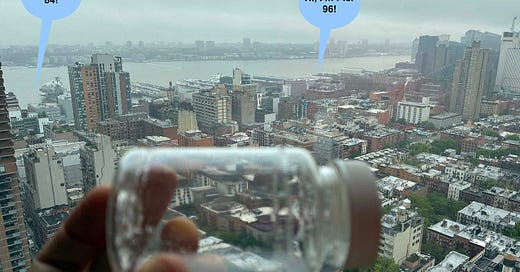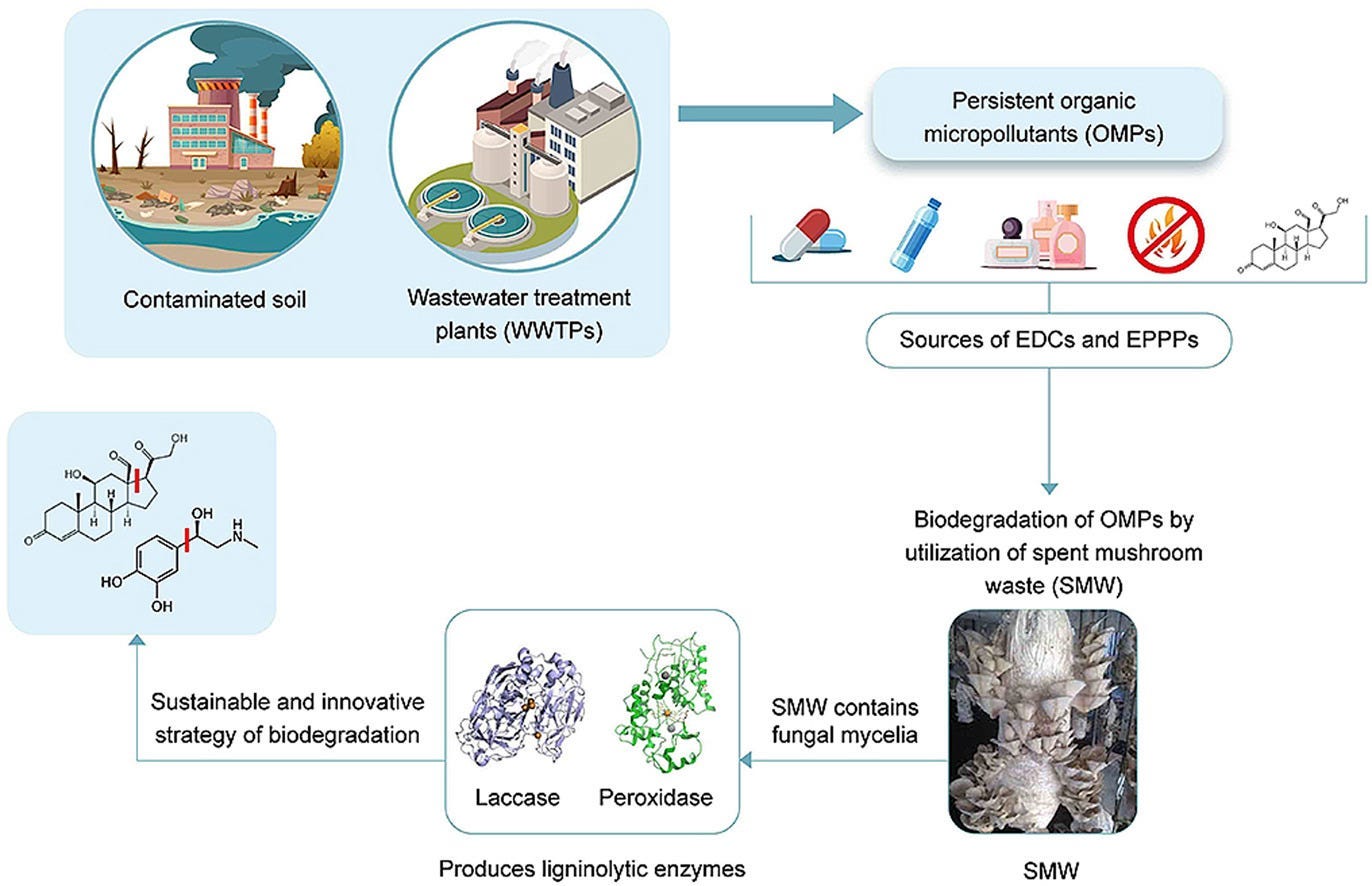#264 - Mushroom waste, Iron powder, Plastics on the brain, Phosphate & PFOS removal
Water Water Everywhere...
Hey Readers,
We have an order of a three-piece meal of innovations with three sides of water news this week. So without any more ado, let’s get into this finger lickin’ meal.
Innovations Roundup
Mushroom waste to remove pharmaceuticals
Focusing on the persistent issue of environmentally persistent pharmaceutical pollutants (EPPPs), and endocrine disrupting chemicals (EDCs), in soil, groundwater, and surface water, researchers at IIT-Guwahati have developed an eco-friendly combat method by combining biochar derived from Spent Mushroom Waste and laccasse a natural enzyme. Their system utilizes laccase-mediated degradation to eliminate antibiotics from wastewater. This process helps prevent the formation of toxic byproducts that are often associated with conventional treatment methods. The research team focused on removing harmful fluoroquinolone antibiotics, such as Ciprofloxacin, Levofloxacin, and Norfloxacin, which are typically present in hospital discharges, industrial effluents, and surface water.According to the researchers, the biochar developed is seen as a cost-effective, scalable, and sustainable alternative to activated charcoal. The system demonstrated a degradation efficiency of 90–95 percent for fluoroquinolone antibiotics within three hours of application, based on lab-scale tests. What’s more - they say that the overall costs for the lab-scale prototype ranged between Rs 4,000 and 5,000 i.e., $50-65, which included the expenses for materials, enzyme immobilization, and reactor setup, indicating its feasibility for scaling up and implementation in both urban and rural areas.
Iron powder to remove PFOS
Scientists at Stevens Institute of Technology in Hoboken, New Jersey, have unveiled a novel method to combat PFOS, a subgroup of PFAS, which were used in a range of products like non-stick cookware, carpets, upholstered furniture, food packaging and specific firefighting foams utilized at airports and military airfields. Traditionally, activated carbon is employed in water filters to capture these persistent pollutants through adsorption, where contaminant molecules adhere to the activated carbon’s extensive surface area.Despite its effectiveness, activated carbon is relatively costly, leading the researchers to explore alternative solutions to carbon - in this case, Iron. More specifically their solution is iron powder — in scientific terms called microscale zero-valent iron or mZVI. In their lab tests, the results indicated that iron powder vastly outperformed activated carbon. They say that ‘the iron powder was 26 times more effective than activated carbon per unit surface area.’ Even rusting which is of course common for iron in contact with air and water, did not diminish its adsorption capacity.
New sea-urchin shaped water treatment to stop phosphorous / algae
Regular readers will know that phosphorus is an essential component of domestic and industrial waste, including fertilizers, detergents, and animal manure, but when it remains in the water, it causes algae blooms in rivers and lakes. Focusing on this rapidly escalating problem, a research group at the Korea Institute of Science and Technology (KIST) has developed a new water treatment material that can recover phosphorus in a short time with high efficiency and disinfect harmful microorganisms at the same time.The team utilized a "sea urchin-shaped" nanostructure material that has the dual function of effectively inactivating total coliform in water and quickly removing and recovering phosphorus. The developed material can recover about 1.1 kilograms of phosphate per kilogram of material in just five minutes, which is extremely fast and efficient compared to existing technologies. They go on to say that the recovered phosphorus can be recycled into various industrial materials such as fertilizers, cleaning agents, and detergents, contributing to the realization of a circular economy beyond simple purification.
News Roundup
A recent study in Nature Medicine (2025) found significant levels of microplastics in the brain tissue of 52 deceased individuals. On average, each brain contained approximately 7 grams of plastic—roughly the weight of a plastic spoon. Individuals with dementia had up to three times more microplastics than those without cognitive decline. Most concerning, the study shows microplastic levels in brain tissue have increased by 50% since 2016, raising urgent questions about long-term effects on brain health and cognitive function. Puts all those plastic to-go cups into perspective, don’t it?
New research from RTI in North Carolina found that - “All but one of 23 beers sampled for toxic PFAS contained the compounds, raising safety questions about one of the world’s most popular beverages. They go to pains to point out that the levels detected in the beer were as high as 40 parts per trillion (ppt). Drinking water limits for several common PFAS compounds are between four and 10 ppt, though drinking water is more of a risk because people generally consume more of it.
And lastly for this week we have this week’s results from the water quality testing efforts in NYC. With the Atlantic Hurricane Season starting as early as Jun 01 this year, we anticipate these results not getting much better, but salute these brave souls testing on our behalf.
That is it for this Friday, until next week,
Peace!









